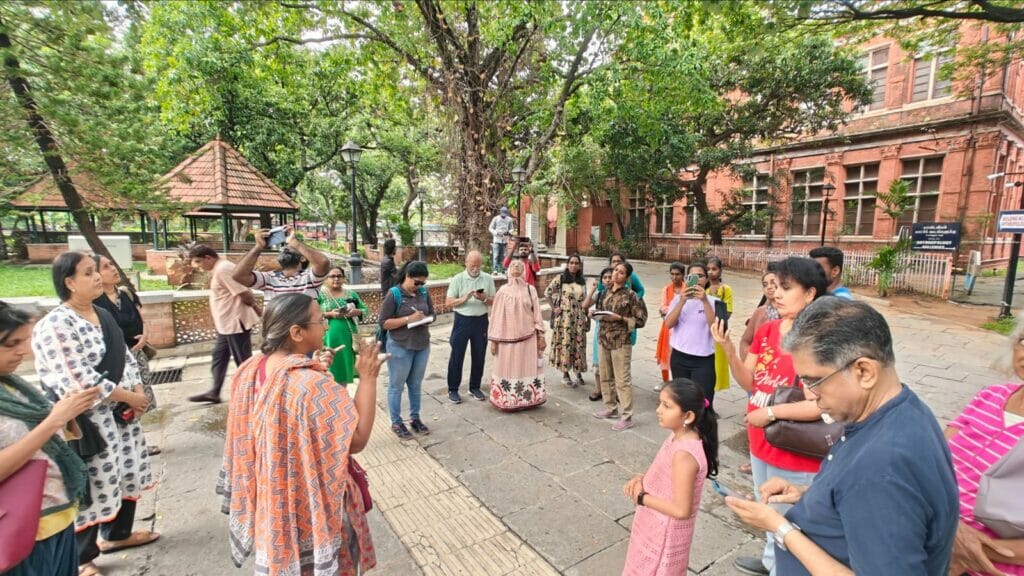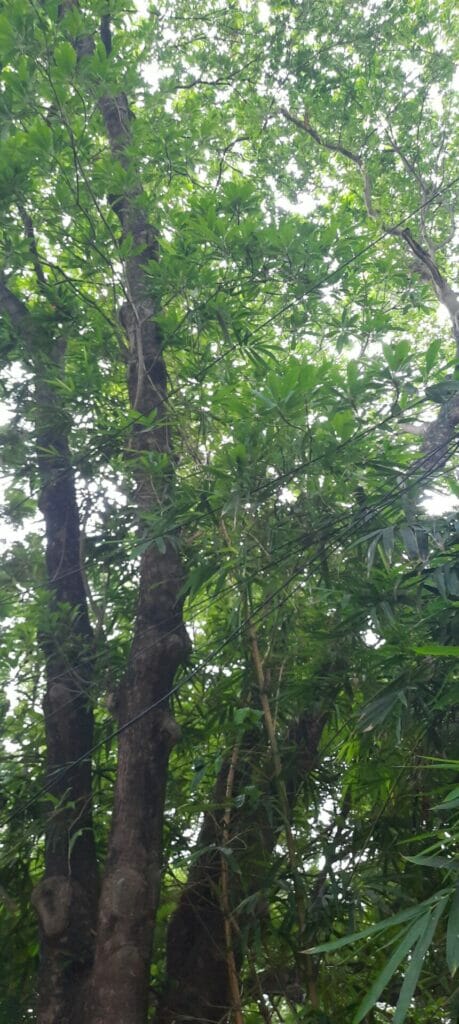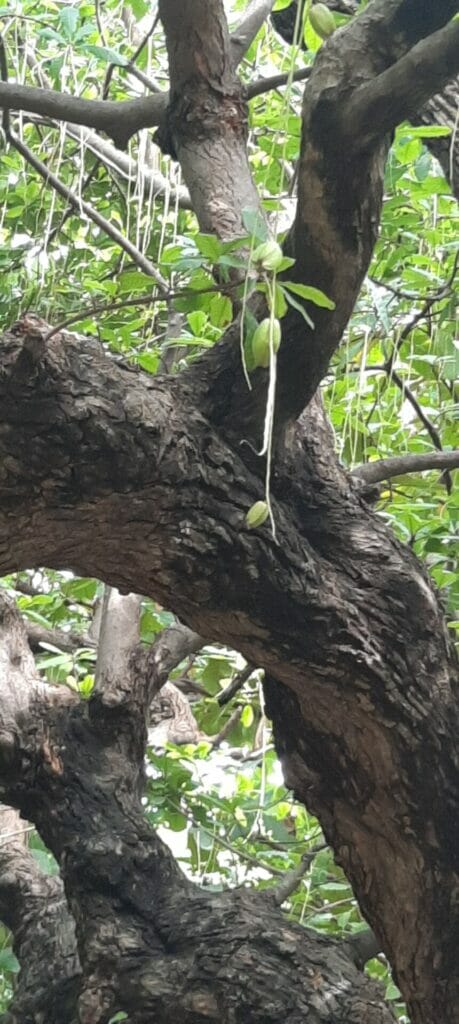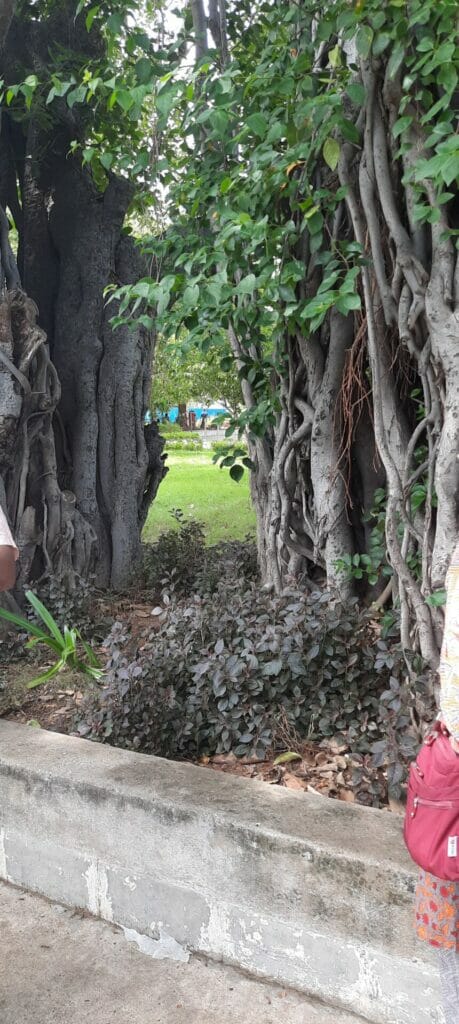Madras Week celebrations have time again proven to be a way for those in Chennai to get to know the city better. One such opportunity was a Heritage Tree Walk organised by Nizhal and Green TN Mission, which helped me get acquainted with the greenery that the city boasts of.
With the city’s is rapidly declining green cover, it becomes even more vital to learn more about its trees and what needs to be done to protect them. The walk proved very illuminating on this count, with the heritage trees standing the test of time inspiring confidence for a greener future for Chennai.
Read more: Here’s what you must know before you plant another tree in Chennai
Trees of Indira Nagar park
The walk started at the beautiful Indira Nagar park which is visited by hundreds of people. What many may not know is that this park is home to some amazing heritage trees that are more than a hundred years old.
At the entrance of the Indira Nagar park is a tall majestic tree, which is often mistaken for a mango tree from a distance. But it is an Illapai Maram, also known as Indian Butter Tree. Many temples have this tree as a Thala Vriksham.
This tree has a cluster of leaves that look like a flower and pale white flowers that bloom at night. The fruit from the tree is fleshy and edible. The tree can grow up to 20 feet and is a semi-deciduous tree. Bats love this fruit and the seeds only sprout into life after being consumed and excreted by these winged companions, highlighting the intricate dance of nature and its interconnectedness.
Trees of Andhra Mahila Sabha and Government Museum
Our next destination was the Andhra Mahila Sabha, home to a magnificent Baobab tree. This exotic wonder exhibits a truly captivating form and colouration. Its robust trunk serves as a reservoir, adeptly storing water to brave arid times. The blooms of this tree are pristine white.
But it is the fruit that truly captures one’s attention – resembling dark rats with distinctive tails. Remarkably, these fruits have earned the affection of bats, their inherent sweetness forming an irresistible allure for these nocturnal creatures.
The third destination was the beautiful Government Museum which houses a lot of history, culture and many historic trees. If the trees and bricks could talk, they would probably give a detailed version of Chennai’s history.
Our journey began with the venerable Thandri, which is also known as Vibeethaki – the tree renowned for dispelling fear. Adorning its branches are clusters of leaves, each one contributing to the canopy’s lush embrace. Come April, these trees undergo a remarkable transformation, as their foliage transitions into a vibrant shade of red before gracefully falling to the earth. The delicate pale white blossoms they bear hold within them a treasure trove of medicinal properties, particularly valued in Ayurvedic practices where they play a crucial role in crafting triphala.
Our second spot was the highly medicinal plant Veppilai, known in English Snow Flakes tree which grows in drought-prone areas. It gives out a milky white liquid when the leaf is plucked. The leaves are the cure for skin diseases such as Psoriasis. The flowers are small and white and attract a lot of bees and butterflies.
We saw the majestically tall huge Timber tree, known in Tamil as Munnera. It is an indigenous tree and it has dense hard roots. It also has lots of medicinal uses. It is a hardwood tree and is used for making furniture. It requires very little maintenance yet has lots of utility.
Read more: Many tree plantation drives in Chennai bear no fruit
Trees of May Day Park and MCC
The historical May Day Park in Chintadripet also houses many heritage trees. The Putranjeeva tree thrives here. There are two types of trees- the male tree and the female tree. They cannot be distinguished unless they flower and bear fruits. The leaves hang from the tree and the fruits have high medicinal value.
Taking centre stage in the May Day Park is the revered Neer Kadambai, a captivating freshwater mangrove species. Distinguished by its unique life cycle, the tree’s fruits delicately dangle from its branches. The seeds themselves embark on an extraordinary journey, initiating their growth while still nestled in the embrace of the tree. Once fully matured, they gracefully descend into a watery expanse, typically a coastal wetland. There, they germinate into new, vibrant plants, perpetuating the cycle of life.
The majestic Banyan tree is a popular landmark in the Government hospital. It is the national tree of India. Its name was derived from the Gujarati traders, the Baniyas, who used to conduct their business under the Banyan tree. The tree has a wide girth and unique prop roots. There is no specific fruiting or flowering season.
We even met the first cousin of the Thandri tree, popularly known as Arjuna Maram or Neer Maradhoor, and derives its name from Arjuna of Mahabharata who was famous for his white clothes. The bark of this tree is white. The trees are very tall and have green leaves which turn yellow around January and then bright brilliant red. Then the flowers and fruits emerge around April. The bark of the tree is good for heart ailments. It is a tree which needs a lot of space to grow but unfortunately, the tree we spotted is enclosed in a concrete enclosure.
The last destination was the Madras Christian College (MCC). It houses the exotic Lignum Vitae also known as Tree of Life- the National tree of Jamaica. It has the densest wood and the bark looks like a leopard’s skin. It has beautiful foliage. The fruits are orange in colour. The flowers are blue in colour and filled with blue tiger butterflies during the flowering season.
The immersive experience offered by the Heritage Tree Walk provided valuable insights into the historical significance of trees, their native environments, and diverse attributes such as flowers, fruits, leaves, propagation methods, and even medicinal properties. The guided tour, skilfully led by Ms. Chitra and Dr. Babu, proved to be both enlightening and engaging.
The journey, spanning four hours, passed by in a flash due to the captivating nature of the experience. Learning about the rich stories behind each tree and its connection to Chennai’s past and present was truly fascinating.




